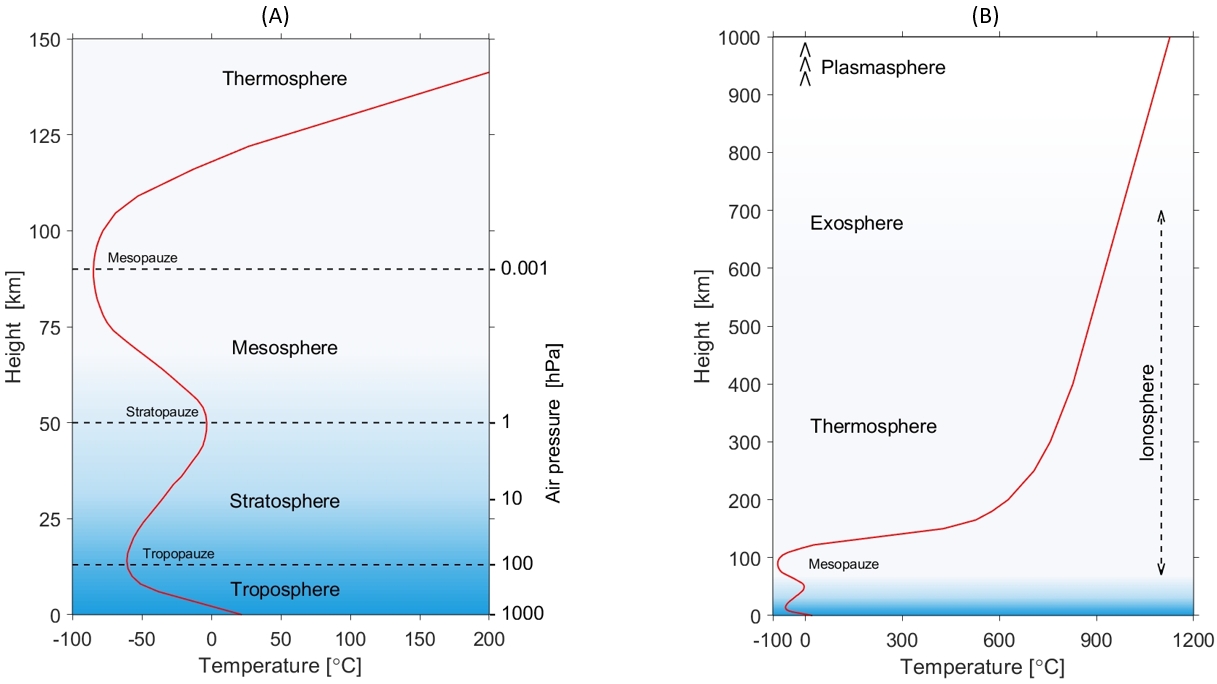The upper atmosphere
Not only does the atmosphere protect us from dangerous radiation of the sun, it provides the air we breathe and the rain that makes the crops grow. It also keeps the temperature on earth within a liveable range. We divide the atmosphere in the layers:
The troposphere
We live at low altitudes, mostly below 5,000 meters. The air becomes thinner with increasing height and above 6 km it becomes difficult to breathe. The temperature falls 6.5°C for every km that we climb. Commercial airplanes fly at heights between 9 and 13 km.
The stratosphere
The air in the stratosphere is dry and stable. The lower part of it contains large quantities of ozone, which absorbs UV radiation. Troposphere and stratosphere together contain 99% of the atmosphere.
The mesosphere
The upper part of the mesosphere is the coldest part of the atmosphere. At 90 km height, the temperature approaches -80°C.
The thermosphere
From there upwards the temperature rises dramatically, approaching 1000°C at 700 km height. In the thermosphere, the solar radiation is very powerful and as a result, part of the molecules are ionized. A layer of ions and free electrons (a plasma) is formed within the thermosphere, which we call the ‘ionosphere’. The ionosphere reflects radio waves allowing for long-distance radio broadcasting such as the BBC World Service.
The plasmasphere
Stratosphere, mesosphere and thermosphere together form the ‘upper atmosphere’. Above the atmosphere, another much cooler plasma extends from 1,000 km to 30,000 km above the earth, shaped by the electric and magnetic fields of the earth. This is called the plasmasphere.

(A) The temperature (red line) and air pressure in the troposphere and in the upper atmosphere (stratosphere, mesosphere and thermosphere) (B) the ionosphere overlaps with the thermosphere, the plasmasphere is at much higher altitudes. (Credit: PITHIA-NRF/Ben Witvliet)
For questions, please contact outreach@pithia-nrf.eu
